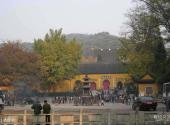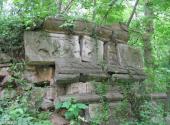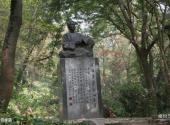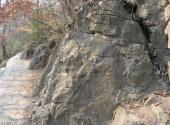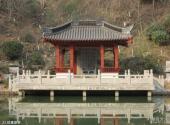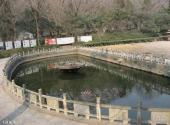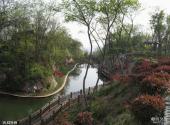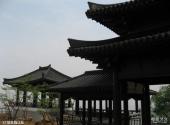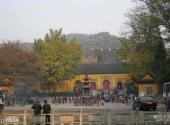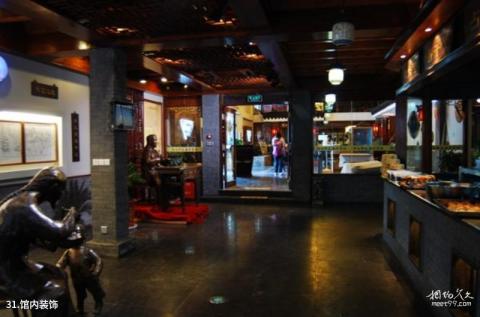
Scenic spot introduction:
Qixia Mountain was once called "the first beautiful mountain in Jinling" by Emperor Qianlong. Qixia Red Maple "It is listed as one of the four major red leaf viewing scenic spots in Jinling. Qixia Mountain has a total area of 860 hectares, and its main peak Fengxiang Peak is 286 meters above sea level. In late autumn, the mountain is covered with red, like the setting sun, which is spectacular. There are more than 80 ancient sites on the mountain, including Qixia Ancient Temple, one of the "four major jungles" of Buddhism. It is a scenic spot that integrates religious culture, imperial culture, green culture, celebrity culture, geological culture, stone carving culture, and tea culture.Attractions distribution:
Qixia Mountain has a beautiful natural environment and many scenic spots and historical sites. Qixia Temple Scenic spots, Lu Yu Tea House Scenic spots, Thousand Buddha Rock Scenic area, Qianlong Palace Scenic Area and other scenic areas.Scenic spot qualifications:
National 4A-level scenic spotScenic spot features:
Photography, sightseeing, leisure, vacation, ethnic tours, cultural tours, historical tours, monuments, scenic spots, famous mountainsScenic spot map:
Travel Notes of Travellers:
- Travel tips: Top 10 places to enjoy red leaves in late autumn in China
- Travel Guide: Nanjing Two-Day Travel Guide 2017
travelling guideline:
1. The visitor center is equipped with a variety of facilities such as tourist route guides, manual consultation, tour guide voice prompt system, computer touch screen, etc.; it has a visitor lounge, a movie theater, a special service area, and a leisure area. It provides beverages, publicity materials for Qixia Mountain attractions, special souvenirs, and various services to facilitate tourists. The program preview of Qixia Mountain scenic area activities is also clearly displayed here.
2. Starting from mid-October every year, the "Autumn Qixia Red Maple Art Festival" is held.
Tour route:
Route A: Hengha Hall → Rainbow Mirror → Bell Tower → Drum Tower → Release Pond→ Ming Zhengjun Monument → Maitreya Hall→ Ancestral Hall→ Guest Hall→ Pilu Palace → Stupa → Thousand Buddha Rock → Flying Apsaras murals → Spring Rain Bridge → Tea Tasting Pavilion→ Green Sword → Xiaoyingpan→ Huashan Pavilion→ Peach Blossom Lake → Peach Blossom Fan Pavilion → Gao Qifeng's Tomb → Back
Route B: North Gate → Rainbow Mirror → Gao Qifeng's Tomb → Peach Blossom Fan Pavilion → Peach Blossom Lake → Huashan Pavilion → Kaitian Rock → Imperial Garden → Biyun Pavilion → Red Leaf Valley → The First Emperor's Riverside Place → Taixu Pavilion → Xiaoyingpan→ Green Sword → Tea Tasting Pavilion→ Spring Rain Bridge → Thousand Buddha Rock → Flying Apsaras murals→ Stupa→ Temples→ Drum Tower → Bell Tower → Hengha Hall → Return
Best time to visit:
Spring and autumn, see maple leaves in autumn, four major leaf viewing spots in China
Shopping recommendations:
(Souvenirs) Red leaf specimens and medals, Buddhist beads, wishing cards, Buddha statues, etc.
(Food) Qianfozhai Vegetarian Restaurant
Scenic spot map:
Scenic spot location:
China>Jiangsu Province>Nanjing>Qixia District>Qixia Subdistrict
How to get there:
Bus: Nanqi Line, Nanshang Line, Longqi Line, Sheyao Line, Line 138 Qixia Temple Just stand.
Self-driving: 1. Tourists from Anhui and northern Jiangsu can come to Qixia Mountain Scenic Area via the Second Bridge and Third Bridge Expressways via the Ring Road.
2. Tourists from Shanghai, Jiangsu, Wuxi and Changzhou can come to our Qixia Mountain Scenic Area via National Highway 312 or Shanghai-Nanjing Expressway.
3. Tourists from southern Anhui and Zhejiang can come to our Qixia Mountain Scenic Area via the Ninghang Expressway and the ring road.
Scenic area map:
Click to expand the scenic area map
Qixia Mountain Ticket Price:
25 yuan/person (off-season)
The price will be raised during the autumn Red Maple Festival to 40 yuan per person (peak season).
Scenic area opening hours:
6:30-17:30

